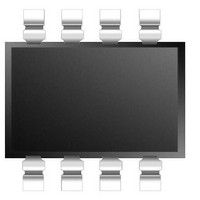FAN7930BMX Fairchild Semiconductor, FAN7930BMX Datasheet - Page 15

FAN7930BMX
Manufacturer Part Number
FAN7930BMX
Description
Power Factor Correction ICs Critical Conduction Mode PFC Controller
Manufacturer
Fairchild Semiconductor
Datasheet
1.FAN7930BMX.pdf
(22 pages)
Specifications of FAN7930BMX
Switching Frequency
300 KHz
Maximum Operating Temperature
+ 125 C
Mounting Style
SMD/SMT
Minimum Operating Temperature
- 40 C
Package / Case
SOP-8
Lead Free Status / RoHS Status
Lead free / RoHS Compliant
Available stocks
Company
Part Number
Manufacturer
Quantity
Price
Company:
Part Number:
FAN7930BMX
Manufacturer:
FAIRCHILD
Quantity:
4 000
Part Number:
FAN7930BMX
Manufacturer:
FAIRCHILD/ن»™ç«¥
Quantity:
20 000
Part Number:
FAN7930BMX-G
Manufacturer:
FAIRCHILD/ن»™ç«¥
Quantity:
20 000
Company:
Part Number:
FAN7930BMX_G
Manufacturer:
FAIRCHILD
Quantity:
7 229
© 2010 Fairchild Semiconductor Corporation
FAN7930B • Rev. 1.0.2
9. THD Optimization: Total harmonic distortion (THD)
is the factor that dictates how closely input current
shape matches sinusoidal form. The turn-on time of the
PFC controller is almost constant over one AC line
period due to the extremely low feedback control
response. The turn-off time is decided by the current
decrease slope of the boost inductor made by the input
voltage and output voltage. Once inductor current
becomes zero, resonance between C
inductor makes oscillating waveforms at the drain pin
and auxiliary winding. By checking the auxiliary winding
voltage through the ZCD pin, the controller can check
the zero current of boost inductor. At the same time, a
minor delay time is inserted to determine the valley
position of drain voltage. The input and output voltage
difference is at its maximum at the zero cross point of
AC input voltage. The current decrease slope is steep
near the zero cross region and more negative inductor
current flows during a drain voltage valley detection
time. Such a negative inductor current cancels down the
positive current flows and input current becomes zero,
called “zero-cross distortion” in PFC.
Figure 38.
Figure 37.
Input Voltage Peak Zero Cross
Input and Output Current Near
Input and Output Current
Near Input Voltage Peak
OSS
and the boost
15
To improve this, lengthened turn-on time near the zero
cross region is a well-known technique, though the
method may be different from company to company and
may be proprietary. FAN7930B embodies this by
sourcing current through the ZCD pin. Auxiliary winding
voltage becomes negative when the MOSFET turns on
and is proportional to input voltage. The negative
clamping circuit of ZCD outputs the current to maintain
the ZCD voltage at a fixed value. The sourcing current
from the ZCD is directly proportional to the input
voltage. Some portion of this current is applied to the
internal sawtooth generator together with a fixed-current
source. Theoretically, the fixed-current source and the
capacitor at sawtooth generator decide the maximum
turn-on time when no current is sourcing at ZCD clamp
circuit
proportional to the ZCD sourcing current.
By THD optimizer, turn-on time over one AC line period
is proportionally changed, depending on input voltage.
Near zero cross, lengthened turn-on time improves THD
performance.
and
Figure 39.
Figure 40.
available
Circuit of THD Optimizer
Effect of THD Optimizer
turn-on
time
gets
www.fairchildsemi.com
shorter












